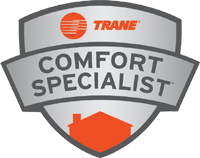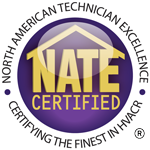Bad Indoor Air Quality? Learn How Air Cleaners and Scrubbers Help

September 08, 2020
What's an air cleaner, and do you need one for your home? Indoor air pollutant concentration may — depending on the contaminants — range from two to five times higher than what you'd find in the air outdoors, according to the U.S. Environmental Protection Agency (EPA). If you want to clear the indoor air, take a look at what you need to know about ventilation, cleaners, and scrubbers.
Can You Really Clean the Indoor Air?
Simply stated — yes. But that doesn't mean you can clean the air in the same way you clean other areas of your home. To reduce dirt, debris, and microorganisms such as viruses, bacteria, and mold on hard and soft surfaces, you need to wipe, soap, or spray down the area. To reduce the same types of particles in the air, you need to:
- Increase ventilation. The enclosed indoor environment allows pollutants to recirculate around your home, contaminating the space. An air ventilation system (such as your furnace or air conditioner) pulls outdoor air into your home and moves it around the space.
- Increase filtration. A cheap HVAC filter won't do much to remove fine particles, such as viruses or bacteria. To clear the air, your home needs a separate air cleaner or a high MERV (minimum efficiency reporting value) air filter.
- Install a separate cleaner or scrubber. If your existing HVAC system doesn't reduce allergens and pollutants effectively, a separate indoor air cleaner or scrubber uses a high MERV or HEPA filter to remove these contaminants.
Instead of physically cleaning the air in the same way you clean your countertops or floors, an air cleaner or scrubber uses a combination of increased airflow (ventilation) and filtration to remove pollutants and particles.
What Can You Clean From the Indoor Air?
The answer for this question depends on what type of air cleaner or scrubber you choose and the filter's MERV rating. According to the EPA, a MERV-rated one through four filter can only remove particles three to 10 microns in size less at a 20 percent rate. In comparison, a MERV-rated 16 filter removes smaller-sized particles 0.3 to one microns at a rate of at least 75 percent.
The highest-rated filters are HEPA (high-efficiency particulate air) filters. These filter 0.3 micron–sized particles at a rate of 99.97 percent, according to the EPA.
Along with a MERV rating, portable styles of air cleaners have a clean air delivery rate (CADR). High-CADR cleaners remove more pollutants from a larger space or indoor area.
Possible pollutants an added air cleaner or scrubber can remove include:
- Dust. Larger dust and other similar dirt-like debris won't require a high MERV-rated filter to remove. Most commercially available residential air cleaners and scrubbers can handle this type of indoor air pollutant.
- Pollen. Even though you should circulate outdoor and indoor air, open windows and doors allow pollen to enter the interior space. A middle or higher-rated MERV filter can remove this type of allergen from your home and reduce related health issues.
- Microorganisms. Viral and bacterial particles can release into the indoor air. But these illness-inducing pollutants are too small to see. To decrease the number of microorganisms in your home, you'll need a high CADR HEPA-filtered cleaner.
- Animal fur. If you have pets, the air could have floating fur and dander. This type of larger debris/particle won't require a high MERV or CADR appliance to remove.
If you're not sure what type of air cleaner or scrubber your home needs, ask a professional. An HVAC contractor can help you to explore the options, learn more about MERV and CADR, and choose the right model for your needs.
Do you want cleaner indoor air? Contact Service 1 Plumbing, Heating & A/C Inc. for more information.




